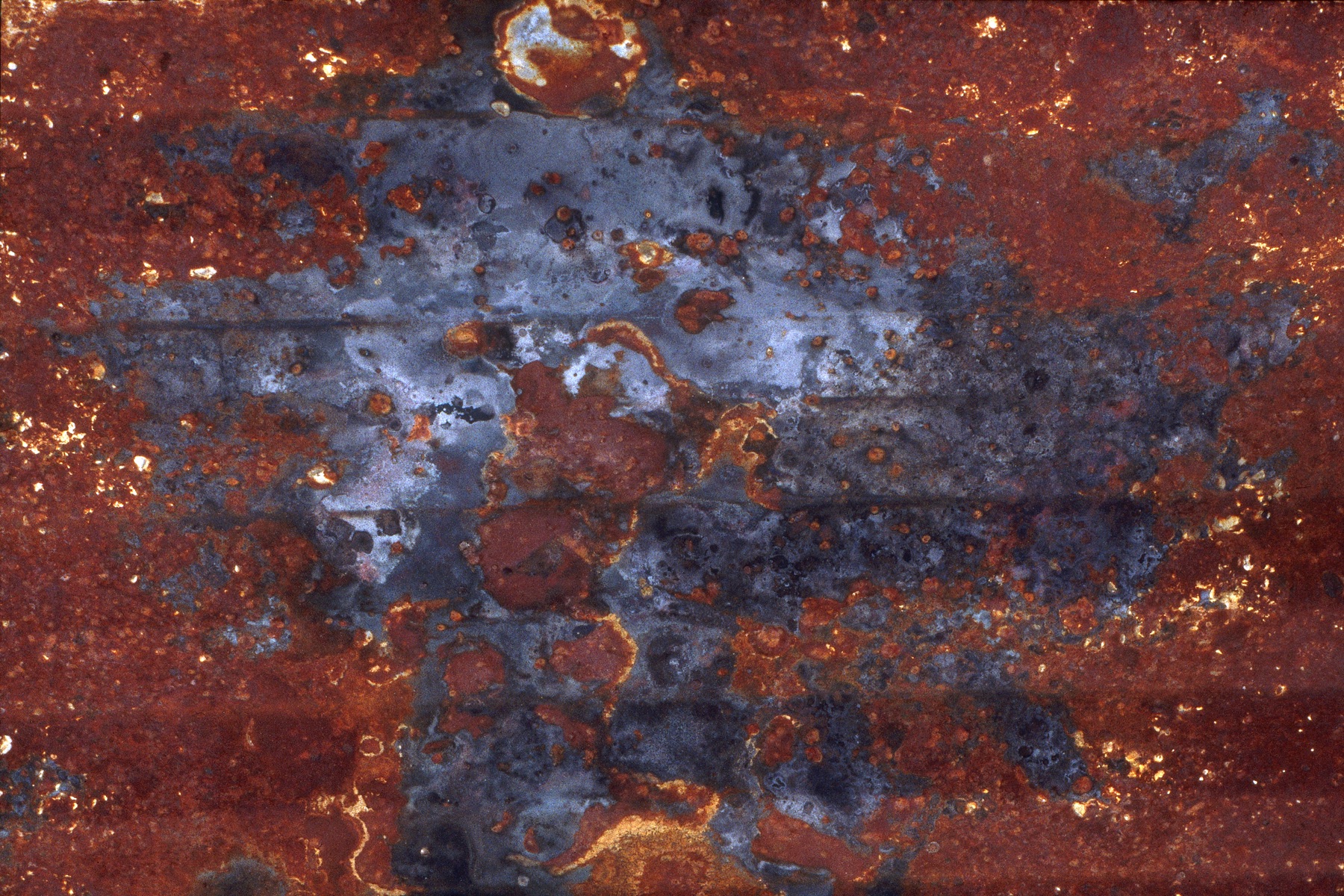Sound Installations and Composed Environments
At the Edge of Wilderness

A Sound-Slide Installation about Ghosttowns in British Columbia
Commissioned by the Western Front Society in Vancouver
for the group show Industrial Ear, September 8-16, 2000
Composer: Hildegard Westerkamp
Photographer: Florence Debeugny
When resource industry moves into British Columbia's landscapes, industrial sites and company towns are cut into the wilderness. The edge between wilderness and such a new place is traditionally knife sharp like the edge between life and a stabbing death. Poison is released into the environment by the violent penetration of industry. Once resources are drained the company moves away leaving its huge, filthy footprints behind, leaving open gaps in mountains and relying on natural processes to absorb the junkheaps, trailings, the waste. Natural rhythms and movements eventually soften the edges, transforming an abandoned industrial site into mysterious rusty shapes and collapsed wooden structures overgrown by moss, weeds, shrubs, and trees. A once noisy, bustling place becomes a quiet ghosttown full of memories. An old industry becomes artifact and lies there like a toothless monster of the past.

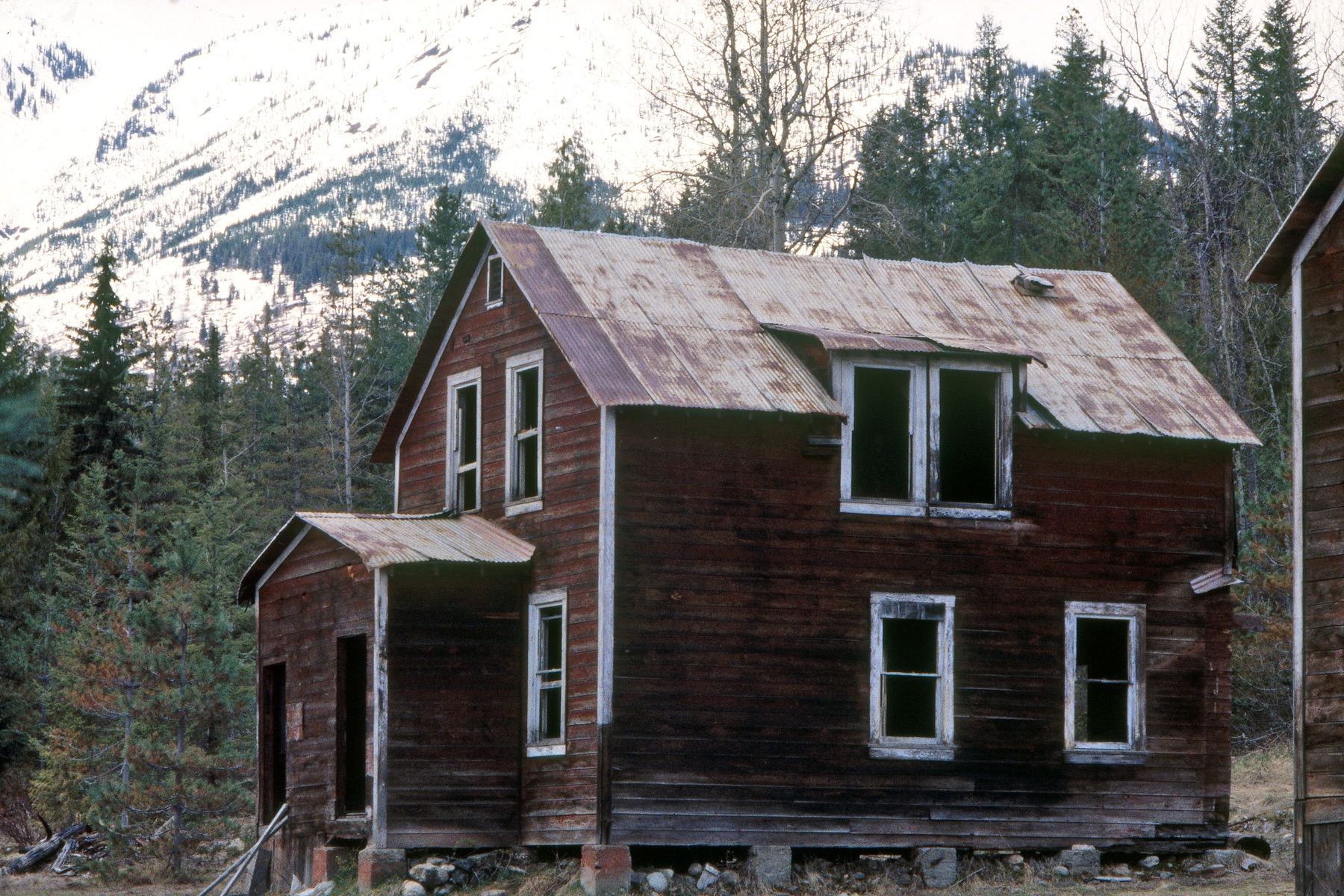

Through images and sounds gathered in various ghosttowns of the Canadian province British Columbia during Spring and Summer of 2000, At the Edge of Wilderness explores the moment of encounter between the contemporary visitor and the abandoned industrial sites: a strange moment of excitement and magic, discovery and adventure; a moment of questions and stories about human industrial activities of the past and present; a moment of sensing the spirits and ghosts still hovering among the skeletal remains while nature is gradually reclaiming its place. It is as if visitor and place are taking a deep breath together during this encounter, convalescing from injury, contemplating the edge where junk and artifact, destruction and new growth, noise and quiet meet; where perceptions of a shameful past in need of cleanÐup collide with feelings of pride towards a heritage worth preserving.

About the Sounds
Initially, when we first arrived at the ghosttown sites, the many rusty objects and structures were lying around silently, telling us stories of their working life, of their function. But as we moved through the sites, stepping on and through them, "playing" on them, hitting them with various objects, listening, they produced the most fascinating resonances. Whether the sounds came from on an old steam engine or an out-of-tune piano with broken strings, they became the musical instruments for At the Edge of Wilderness, Exploring their acoustic/musical properties in their dillapidated state, brought them to life in surprising ways. In some cases, depending on how they were "played", they created sounds and rhythms not unlike that of old machinery from the turn of the 19th to the 20th century. They are the sounds that carry us from the presence of the existing ghosttowns into the imagined past of these places, and they delineate the particular edge that has been created between nature and this form of civilization all over the North American continent. Turning the industrial structures into musical instruments may be a way of exorcising the damage that has been done and is still being done in many cases on this continent and all over the world - a way to make peace or find a balance between the destructive and the creative forces that tend to work side by side in adventurous explorations.
The majority of the sounds for the piece-the natural sounds, soundmaking on the rusty structures, sounds of cars and trains, or of our footsteps and spoken voices-were recorded on the ghosttown sites themselves. Recordings of steam trains and of old machinery such as the "Buffola Iron Worker" come from the environmental sound archives of the World Soundscape Project at Simon Fraser University. HW
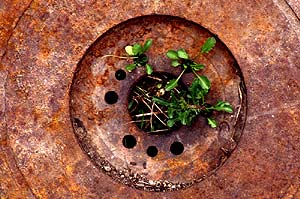
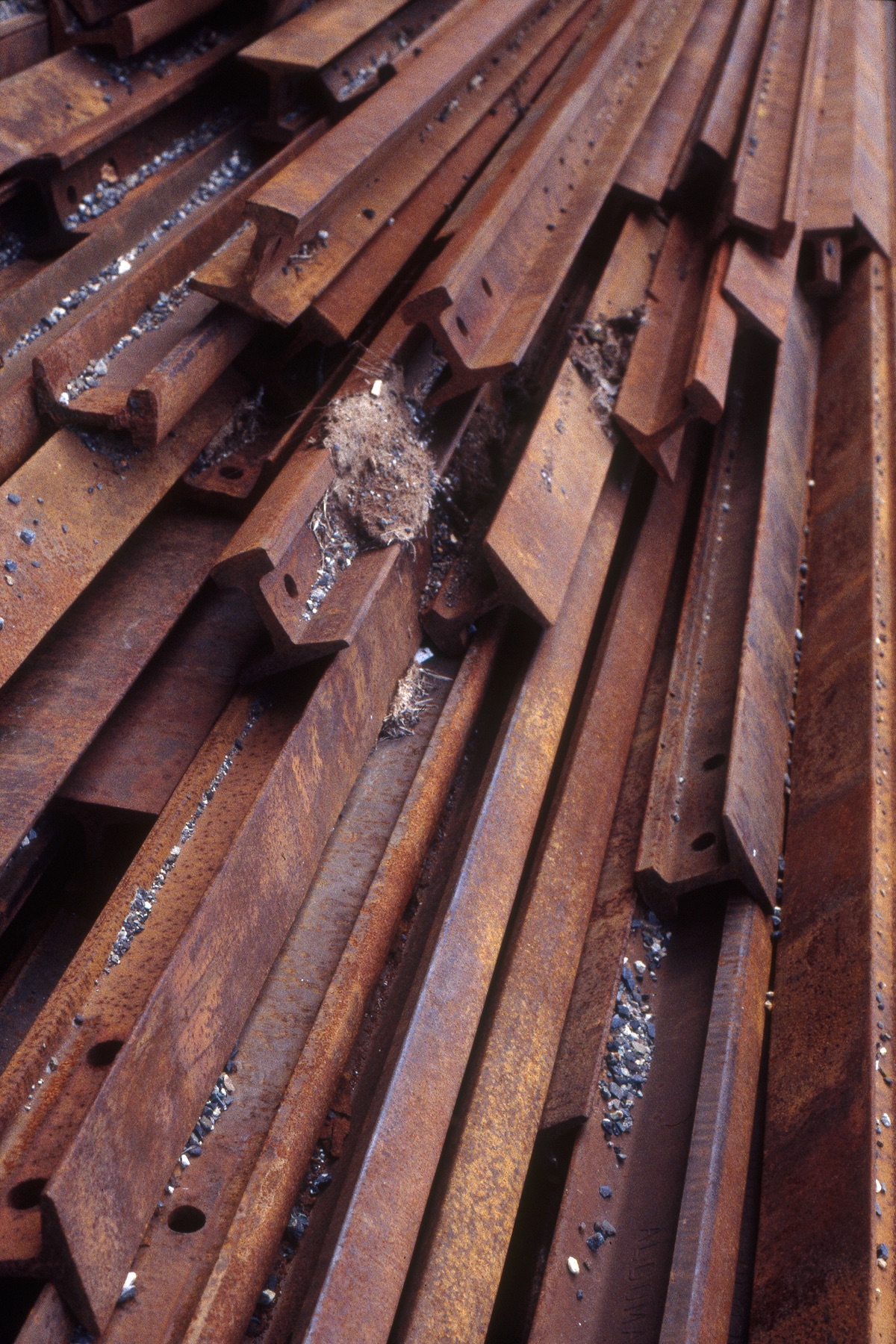
Photographer's Comments
When I visited some of BC ghosttowns and abandoned mines it seemed as if people had left these places in a hurry like they would when a natural catastrophe, such as a volcano eruption, occurs. These relics portray despair and desolation revealing the core of human beings and the experiences they went through. They transport us to the centre, to the essential matter in life: survival, which demands acceptance and humility.
I look for signs and traces of our past and history. I imagine that people full of hope and ambition tried very hard to find fulfilment of their dreams here. Or they simply wanted to make a living. When it did not work, because of price decreases in ore (such as copper, silver, zinc or gold) or because of fires and floods, or simply because the railway did not make it to these secluded places, they left to try their chance somewhere else.
I like deterioration, abandonment, and destruction. It gives an impression of despair, distress, disillusion, and sadness. People left behind them the structures they had built and the materials they had brought in. Apparently, they had no concern about it all lying around like garbage after their departure, no concern that it would take years for these traces to disappear. The wooden constructions disintegrate relatively quickly back to nature, but not the many metal objects and cement constructions. Vegetation may grow around them and cover them from our sight, but they will continue to lie there for years unabsorbed by nature. And paradoxically, we like it: these ruins provoke our imagination and appeal to our sense of aesthetics. We still want to visit these abandoned sites.
I am very attracted to the chaotic arrangement of these distorted shapes, and the combination of colours, textures, forms and materials. When I look at them, I feel the need to transfer onto photographic film the detailed images that my inner eye perceives. Each time, I walk through these abandoned sites, it feels as if I wander through an untouched museum without organization. FD
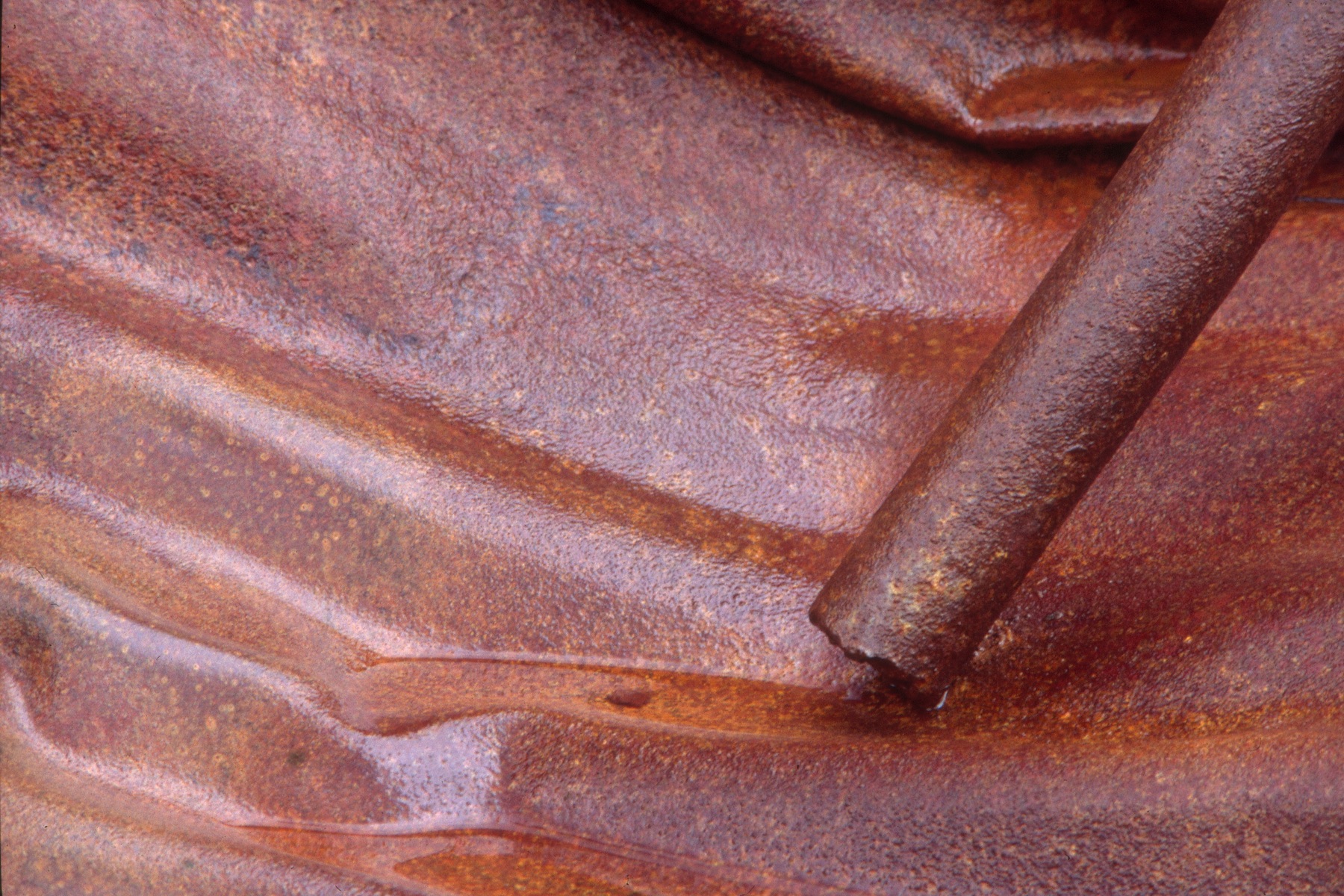
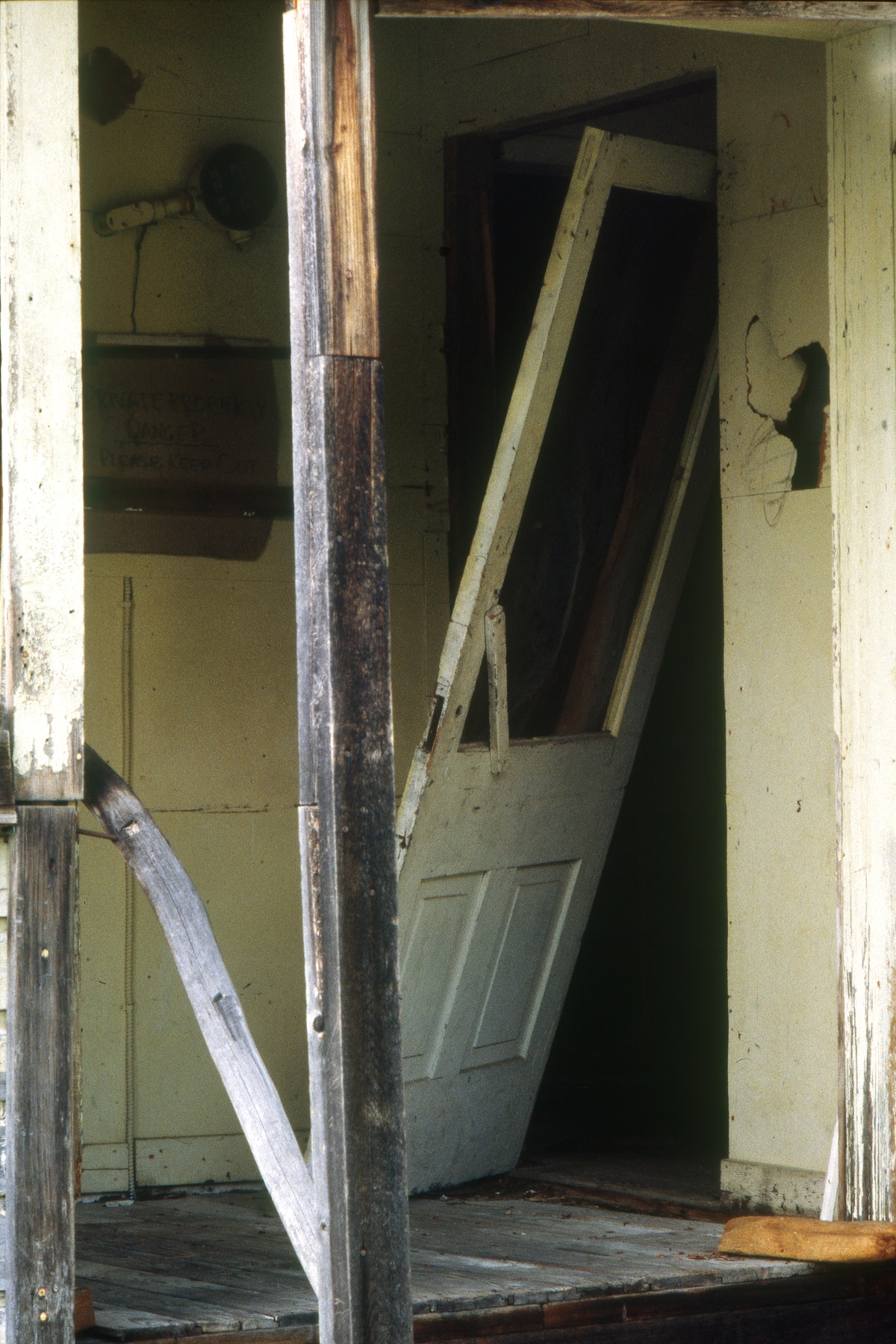
List of places we visited for gathering sounds and images
Near Vancouver:
- Harrison Mills and Carnarvon,
- Mount Sheer behind Britannia Beach.
In the Kootenay Lake/Slocan Lake area:
- Lardeau,
- Nashton,
- Manganese Mine,
- Whitewater Deep Mine,
- Iron Hand Mine,
- Retallack,
- Zincton,
- Rambler,
- Sandon,
- Cody,
- Camp Galilea,
- Roseberry
Between Kootenay Lake and Trout Lake:
Marblehead, Marblehead Quarry, Poplar Creek, Gerrard.
Near Princeton:
- Blakeburn mine
- Granite City (Coalmont)
Near Gold Bridge:
- Brandywine,
- Bralorne,
- Bradian Prairies
- Pioneer


Thanks
We would like to thank the following people for their various ways of assisting us in creating this piece:
Peter Grant for lending us his VW Van and for being generally supportive.
Leah Seaman and Brian Terry for their cabin.
Jessie and David Herreshoff near Kaslo for letting us recharge our equipment batteries while in the field
Norbert Ruebsaat for introducing Hildegard to ghosttowns in the first place many years ago.
Ray Knudsen from Britannia Beach who guided Florence to the site of Mount Sheer.
All sounds copyright © Hildegard Westerkamp 2000
All images copyright © Florence Debeugny 2000






